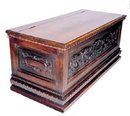Renaissance Chest
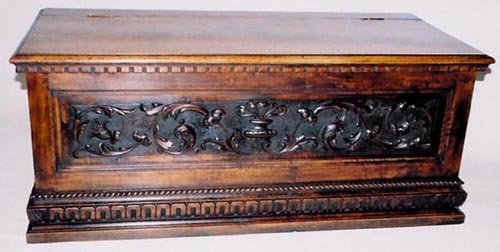
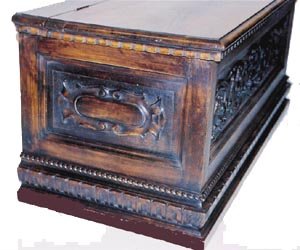
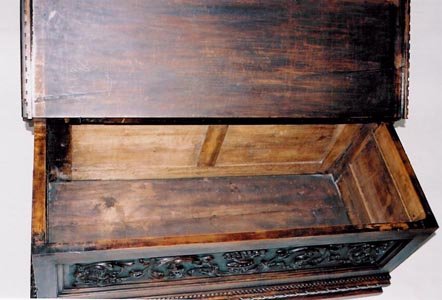
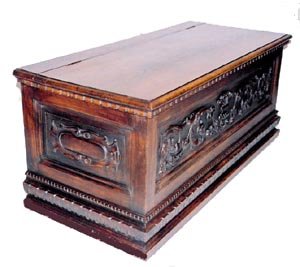
Unavailable
This chest or trunk is a wonderful example of the influence of the Italian Renaissance on French furniture design, as reinterpreted during the 19th century revival of interest in earlier styles. Hand-carved of solid walnut, the chest has an intricately carved central panel on the front comprised of a central vase and graceful, curving acanthus leaves radiating horizontally from it in the manner characteristic of Tuscan chests of the 16th century. Just below the top is a frieze of dentil moulding balanced by a frieze in a key pattern just above the base. It is evident that the chest stood on bun feet at one time but, in accord with whoever removed them, we feel it is more aesthetically pleasing without them. The chest opens with a hinged top in solid walnut whose depth of color and patina are lush. Each side panel contains an exquisitely carved cabochon ringed by ornamental flourishes. While the chest displays so many characteristics of the Italian chest or cassone of the 16h and 17th centuries, we believe it is French in origin since the top is flat rather than layered, and due to the color of the walnut. Most likely, it is a copy or interpretation of chests made by the Italian craftsman who accompanied Catherine de Medici to Paris when she married the future King Henri II of France. Ader-Tajan, Collection Bruno Perrier Haute Epoque (Catalog for Sale at Auction on April 6, 1992 at the Hotel Drouot, Paris); Antiquités et Objets DArt 10, Le Mobilier Italien (Editions Fabri, Paris, 1990) Because the chest is relatively low and wide, it is ideal for the foot of a bed or under a window. It can be used in virtually any room or as the focus in an entryway or foyer. For more information, visit M. Markley Antiques on the Web -- the premier resource in the U.S. for French Gothic Revival and Renaissance Revival furniture, including Henri II and Louis XIII styles.
M. Markley Antiques
Spring, Texas
Dealer accepts: Check
Shipping: Negotiated with Seller



